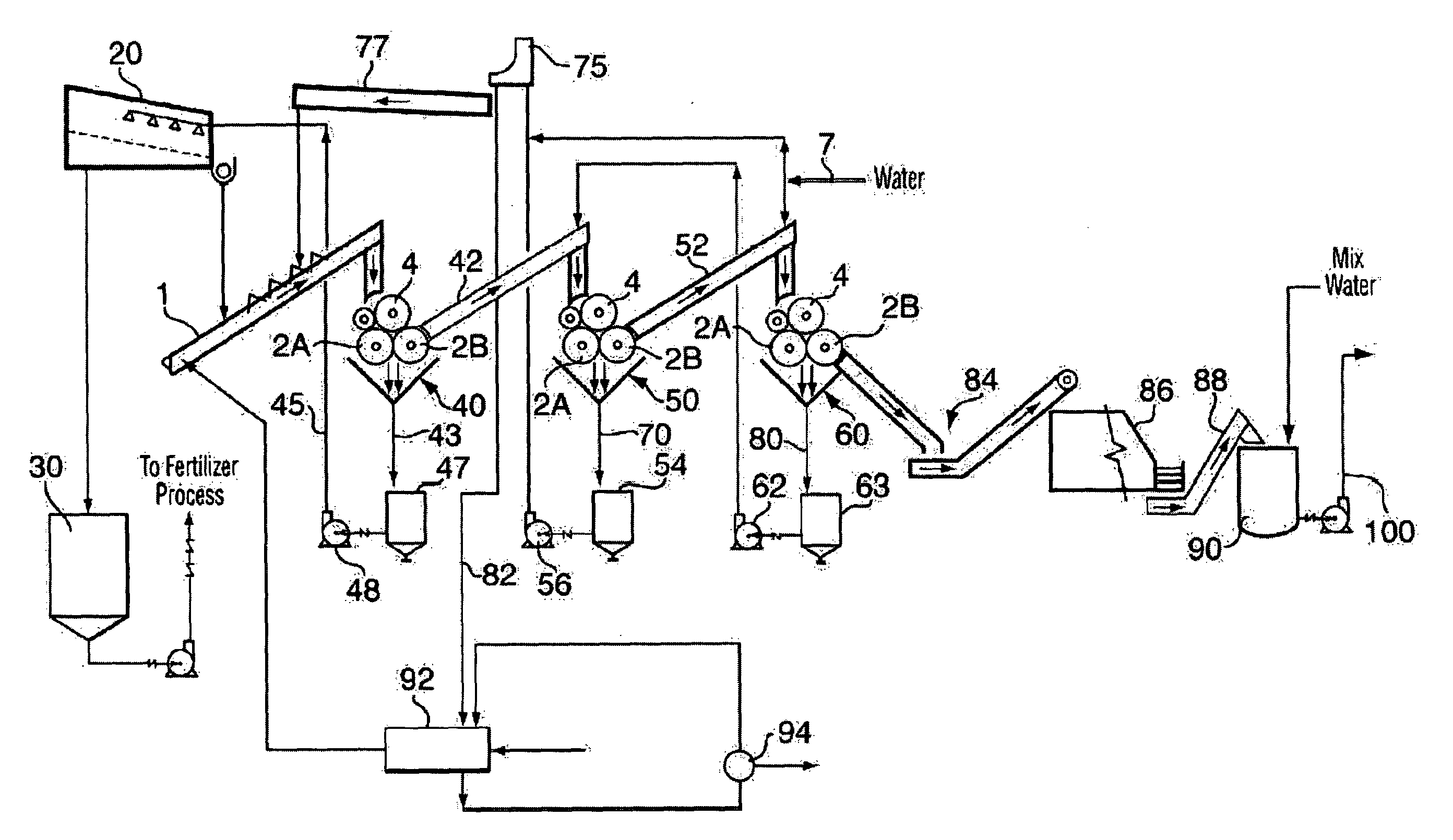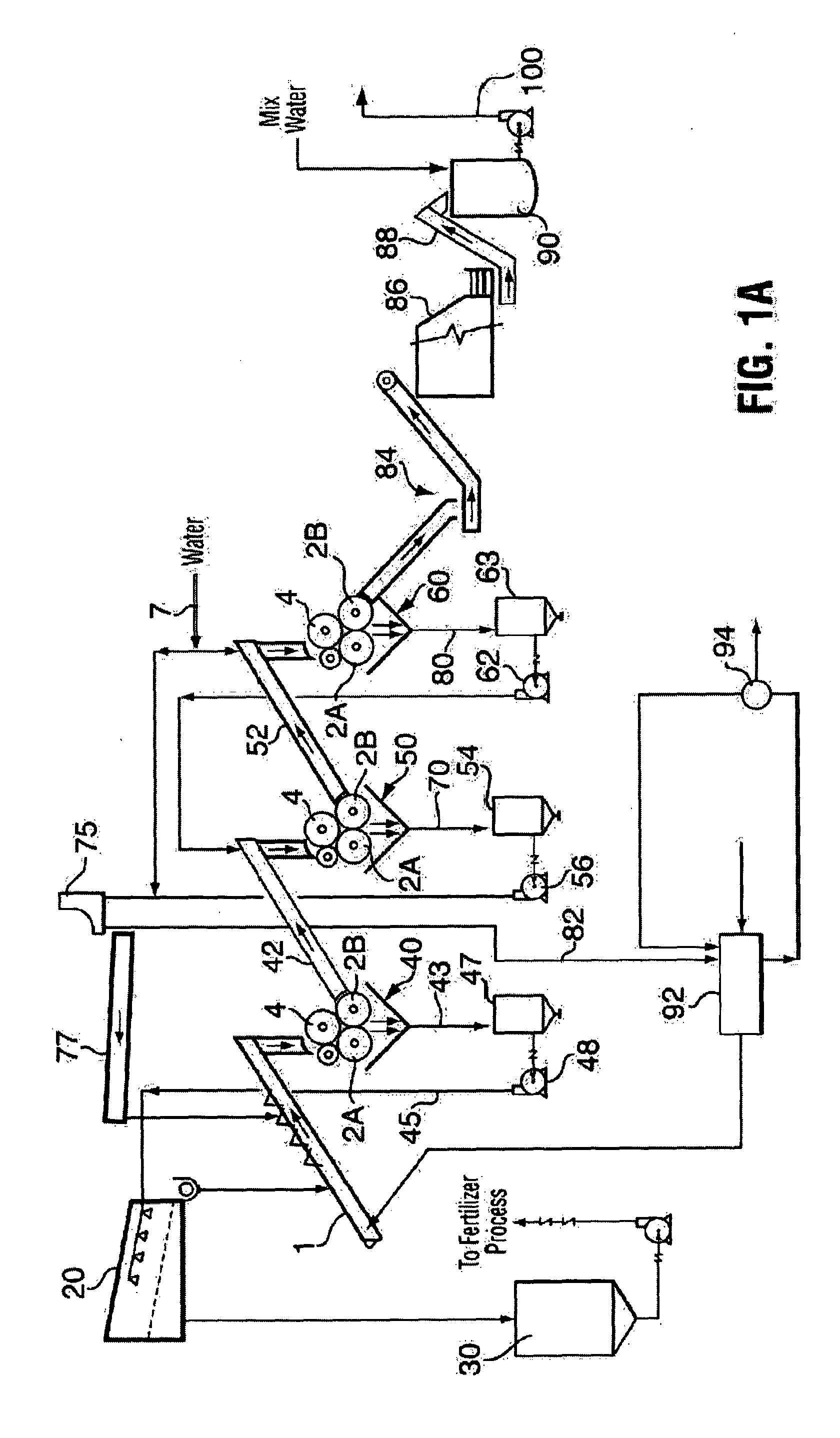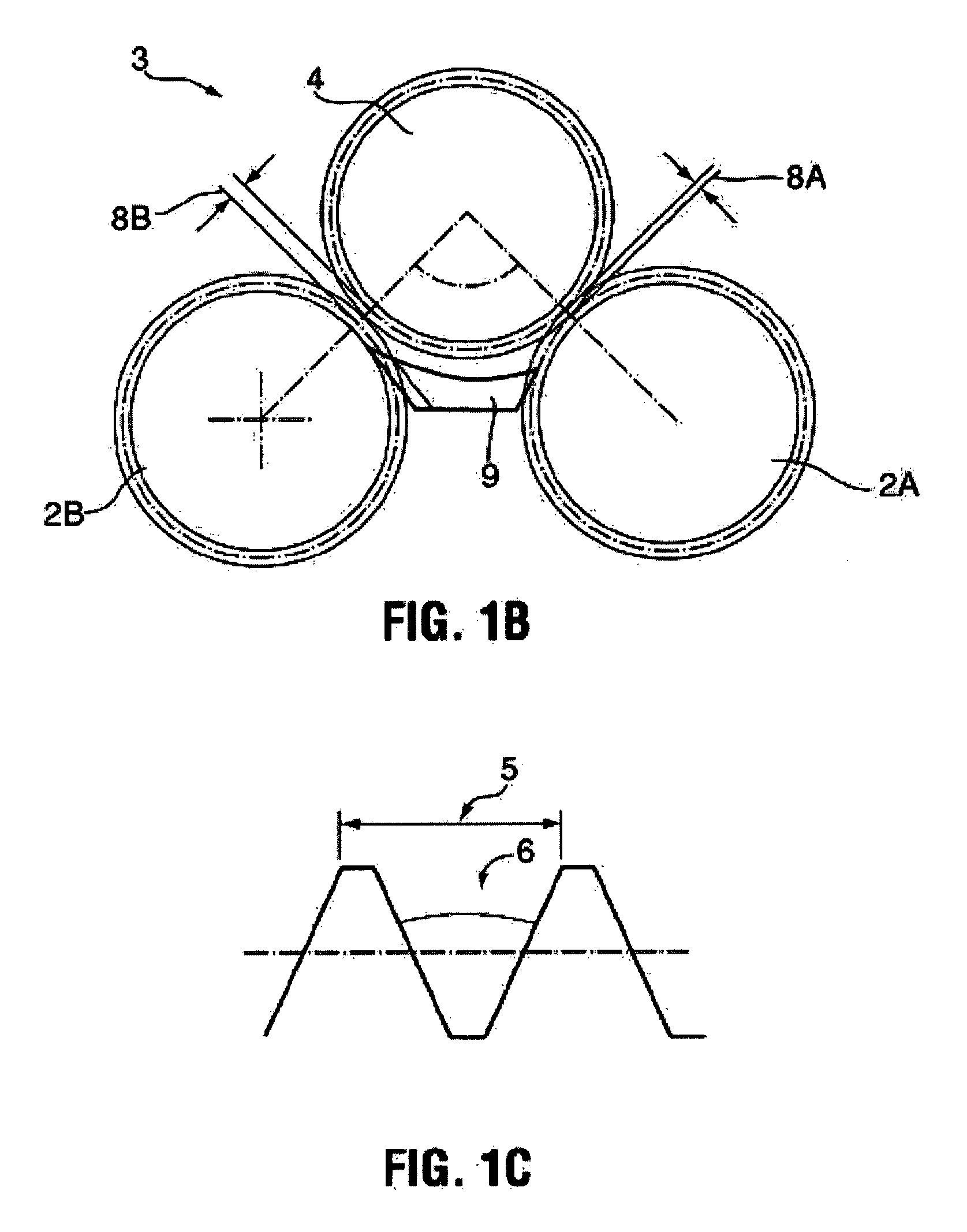Process for Producing a Pretreated Feedstock
a pretreatment and feedstock technology, applied in the field of pretreatment feedstock production, can solve the problems of little conversion of cellulose to glucose itself, negative environmental impact of the use of these feedstocks in the conversion process, and inability to expand the production of ethanol from these sources, so as to reduce the risk of blinding dry milling equipment, less power input, and less power input
- Summary
- Abstract
- Description
- Claims
- Application Information
AI Technical Summary
Benefits of technology
Problems solved by technology
Method used
Image
Examples
example 1
Use of Roll Press System to Decrease Particle Size of Wheat Straw
[0102] Initial size reduction of wheat straw was performed using a wood chipper-like device. The average length of the straw was reduced to about 15 cm. The chopped straw was stored until required for press trials, with about ⅓ in a covered truck bed, and the remainder in an outdoor bin. Heavy rain was experienced for two days during the trial.
[0103] The mill was of a four-roll type, with a “floating” hydraulically damped top roll. The clearance between the roll nip points was set to 0.0001″ (one ten thousandth of an inch). The rolls were of stainless steel construction, 0.76 m (30″) long, with a diameter of 0.457 m (18″). The rolls were circumferentially grooved, with a spacing of 1.3 cm (0.5″) between the grooves. The groove depth was not recorded. The mill was driven via a 480 V, 74 A, 60 hp, 1775 rpm electric motor. The motor was connected to a gearbox, but the gear reduction ratio and the final roll rpm were not...
example 2
Use of Roll Press System with Enhanced Shear to Optimize Particle Size of Wheat Straw
[0131] Initial size reduction of wheat straw is done using a wood chipper-like device. The average length of the straw is reduced to about 15 cm. The chopped straw is stored until required for press trials.
[0132] The mill is of a four-roll type, with a “floating” hydraulically damped top roll. The clearance between the roll nip points is set to about 0.0001″ (one ten thousandth of an inch). The rolls are of stainless steel construction, 0.76 m (30″) long, with a diameter of 0.457 m (18″) or 0.432 m (17″). The rolls are circumferentially grooved, with a spacing of 1.3 cm (0.5″) between the grooves. The mill is driven via a 480 V, 74 A, 60 hp, 1775 rpm electric motor. The mill is instrumented with needle gauges showing the motor amps and the nip pressure between the rolls.
[0133] The shear produced by the rolls of the press is increased by either a) using a top roll with a diameter of 0.432 m (17″) ...
PUM
| Property | Measurement | Unit |
|---|---|---|
| particle length | aaaaa | aaaaa |
| temperature | aaaaa | aaaaa |
| particle length | aaaaa | aaaaa |
Abstract
Description
Claims
Application Information
 Login to View More
Login to View More - R&D
- Intellectual Property
- Life Sciences
- Materials
- Tech Scout
- Unparalleled Data Quality
- Higher Quality Content
- 60% Fewer Hallucinations
Browse by: Latest US Patents, China's latest patents, Technical Efficacy Thesaurus, Application Domain, Technology Topic, Popular Technical Reports.
© 2025 PatSnap. All rights reserved.Legal|Privacy policy|Modern Slavery Act Transparency Statement|Sitemap|About US| Contact US: help@patsnap.com



